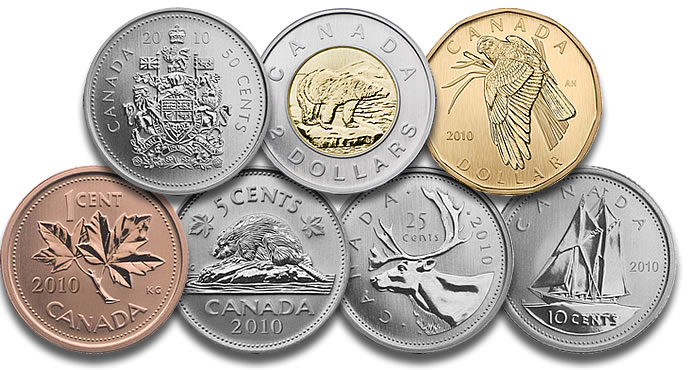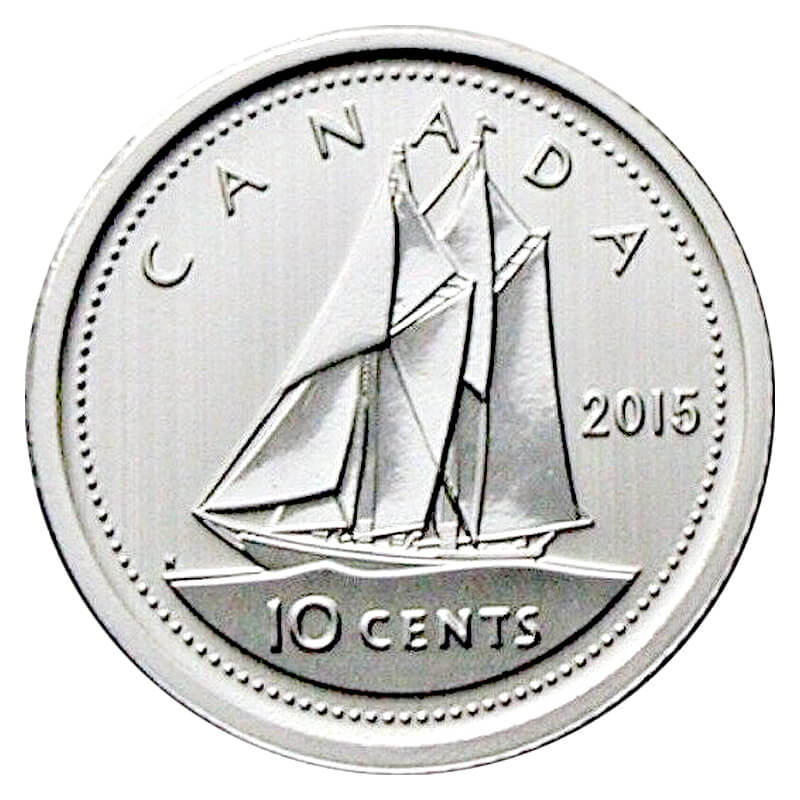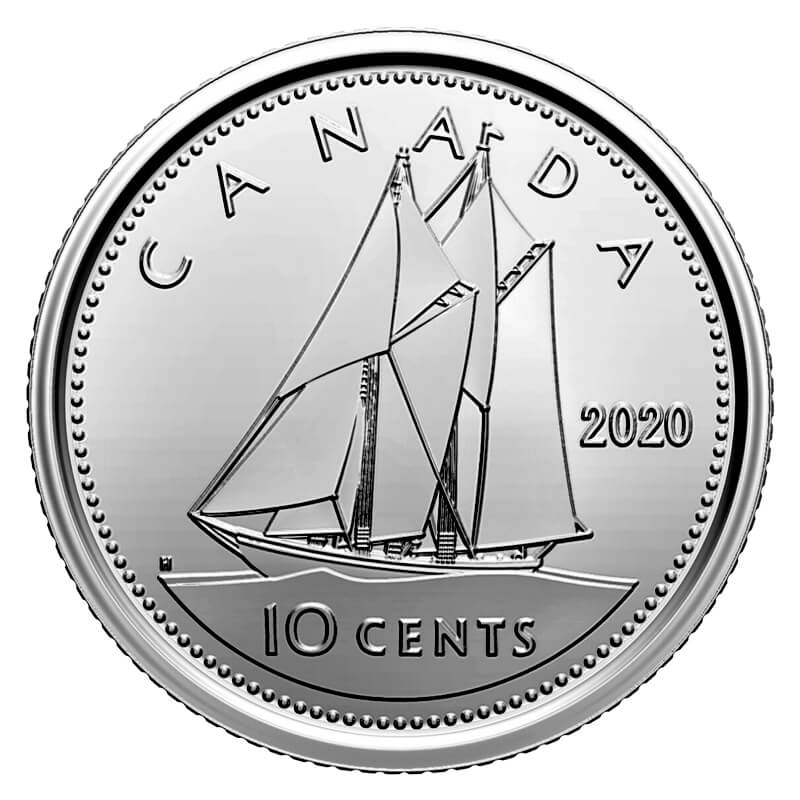Canadian Dime
Scroll down to the Canadian section. A 68 dime is 50% silver. Some are 0% silver. The weight would give it away. A 50% silver dime is 2.33 grams and a 99.9% nickel. Canadian coins price guide and values. The British colonies, led by the Province of Canada, needed to replace the sterling system with the decimal system used in the United States. In 1858, With London's approval, Province of Canada issued coins minted in England in denominations of 1, 5, 20 and 50 cents.
1936 Canadian 'Dot' Dime. Fetching $184,000 at auction, the 'dot' dime of 1936 is another great collector's coin. This dime was actually produced in 1937, and the dot was added to the 1936 design.
PrintShare- Canada's leader in buying and selling collectible coins and banknotes, precious metals and jewellery. We offer Royal Canadian Mint collectible coins and provide selling values on coins and paper money.
- Canadian silver coin values based only on total silver value and weight. Does not include any copper value or weight. Resultant values will be rounded to two or more decimal places depending on length. In 1967, some of the Canadian dimes and quarters were minted in 80% silver while the remainder were minted in 50% silver.
- MLA 8TH EDITION
- Marsh, James H.. 'Bluenose'. The Canadian Encyclopedia, 01 March 2016, Historica Canada. https://www.thecanadianencyclopedia.ca/en/article/bluenose. Accessed 09 February 2021.
- APA 6TH EDITION
- Marsh, J., Bluenose (2016). In The Canadian Encyclopedia. Retrieved from https://www.thecanadianencyclopedia.ca/en/article/bluenose
- CHICAGO 17TH EDITION
- Marsh, James H., 'Bluenose'. In The Canadian Encyclopedia. Historica Canada. Article published February 07, 2006; Last Edited March 01, 2016. https://www.thecanadianencyclopedia.ca/en/article/bluenose
- TURABIAN 8TH EDITION
- Marsh, James H.. The Canadian Encyclopedia, s.v. 'Bluenose', Last Edited March 01, 2016, https://www.thecanadianencyclopedia.ca/en/article/bluenose
Thank you for your submission
Our team will be reviewing your submission
and get back to you with any further questions.
Thanks for contributing to The Canadian Encyclopedia.
Close| Published Online | February 7, 2006 |
| Last Edited | March 1, 2016 |
Built to Race
The Bluenose was launched at Lunenburg, Nova Scotia in 1921. It was named with the common nickname – first used by T.C. Haliburton – applied to those born in Nova Scotia.
The schooner was designed by William J. Roue to fish for cod on the Grand Banks off Newfoundland, at a time when such work was done from the decks of wooden tall-ships powered by sail. The Bluenose was also designed to race on the open ocean. It was the first time the self-taught Roue had designed a working fishing schooner, rather than a recreational or racing vessel.
Speed was essential to both of the Bluenose’s tasks. Obviously, the faster boat wins the race, but the faster fishing vessel also gets back to port quickest, guaranteeing its crew will get the best price for its catch.
Victor Cavendish, the governor general of Canada, travelled to Lunenburg to drive the golden spike that would mark the ship’s completion. He swung the big iron hammer at the spike, but failed to connect – he’d just been to another function and evidently enjoyed a bit too much drink. Someone else helped him out, and the spike was finally driven.
Queen of the North Atlantic
Skippered by Captain Angus J. Walters against the fastest American schooners, many of them from Gloucester, Massachusetts, the Bluenose crew set its sights on winning the International Fishermen’s Race. The event pitted working fishermen in their regular schooners, competing for the Fishermen’s Trophy.
The Bluenose achieved that goal, and more. It won the Trophy – emblematic of the sailing championship of the fishing fleets of the northwest Atlantic – in 1921, 1922 and 1923. Its only defeat was by the Boston schooner Gertrude L. Thebaud in the Lipton Cup in 1930, but it outraced the Thebaud for the Fisherman's Trophy in 1931 and 1938.
The Bluenose also held the record for the largest catch of fish brought into Lunenburg.
Canadian Dimes Silver Years
Nicknamed the 'Queen of the North Atlantic,' the Bluenose represented Nova Scotia around the world. It appeared at the Chicago World Fair in 1933 and crossed the Atlantic to England in 1935 to attend the silver jubilee of King George V.
In 1937, artist Emanuel Hahn’s sculptured profile of the Bluenose was stamped on the Canadian dime, and the ship still decorates the coin today.

Decades later, in 1978, the Bluenose would be further immortalized in a song of the same name, by folk music legend Stan Rogers.
Caribbean Grave
Despite its international fame, the Bluenose came to an ignominious end. As the salt fishery declined, and sailing schooners were replaced by engine-powered ships on the Grand Banks, the Bluenose was sold in 1942 to the West Indies Trading Company. Captain Walters, the ship's last Nova Scotian owner, stood at the waterfront in Lunenburg and wept as the Bluenose sailed away for the last time.

In the Caribbean, the Bluenose carried rum, sugar, bananas and war supplies to the United States. The ship had a close call while running aviation fuel and dynamite near Havana, Cuba, when a German U-boat surfaced right beside it. The submarine captain asked the Bluenose captain what he was doing – he answered that he was fishing. According to one account, the German recognized the Bluenose and let it sail off.
In 1946, while hauling freight near Haiti, the Bluenose hit a reef and sank.
Namesake Replica
Twenty years after the original Bluenose sank, people in her home port of Lunenburg decided to build a replica of the great schooner. The Oland Brewery paid for the project and used the ship to advertise its beer.
The Bluenose II was built in the same Smith and Rhuland shipyards in Lunenburg as the original, and was launched in 1963 amid nostalgia for the lost golden age of sail. The builders used Roue’s original plans, with some minor alterations. Captain Walters sailed on the maiden voyage.
In 1971, the Bluenose II was given as a gift to the province of Nova Scotia. It began its life as Nova Scotia’s sailing ambassador, based in Lunenburg, but regularly travelling to represent the province, and carrying tourists on day cruises.
Second Rebuild
In 2009, the Nova Scotia government decided to restore the aging, 50-year-old Bluenose II. The ship was suffering badly from 'hogging' – which happens when the hull becomes distorted due to the the up-pressing water and the downward pull of gravity.
In 2010, many were surprised to learn that the project appeared to be less a restoration than a complete re-build of virtually a new ship. Almost the entire Bluenose II schooner had been put through a wood chipper and dumped in a landfill. The only preserved parts were the rudder, the boom and part of the prow. The Lunenburg Shipyard Alliance, the group handling the work, said it still qualified as a rebuild, and not an entirely new boat.
After lengthy delays, the rebuilt Bluenose II was launched into Lunenburg harbour in the spring of 2015. The work was years later, and several million dollars over budget. The province's sailing ambassador – a reminder of the original icon – resumed regular duties in June 2015.
| Value | 0.10 Canadian dollar |
|---|---|
| Mass | 1.75 g |
| Diameter | 18.03 mm |
| Thickness | 1.22 mm |
| Edge | Milled |
| Composition | Nickel-plated steel 92% steel, 5.5% Cu, 2.5% Ni plating |
| Years of minting | 1858–present |
| Catalog number | - |
| Obverse | |
| Design | Queen Elizabeth II, Queen of Canada |
| Designer | Susanna Blunt |
| Design date | 2003 |
| Reverse | |
| Design | Bluenoseschooner |
| Designer | Emanuel Hahn; design based on a Wallace MacAskill photograph of Bluenose, not artwork of Hahn[1] |
| Design date | 1937 |

In Canada, a dime is a coin worth ten cents. It has been the physically smallest Canadian coin since 1922; it is smaller even than the penny, despite its higher face value. According to the Royal Canadian Mint, the official national term of the coin is the 10-cent piece, but in practice, the term dime predominates in English-speaking Canada. It is nearly identical in size to the American dime. Unlike its American counterpart, the Canadian dime is magnetic due to a distinct metal composition. From 1968 to 1999, it was composed entirely of nickel, and since 2000, it has consisted of a steel core with plating composed of layers of nickel and copper.

Currently the dime has, as with all Canadian coins, a portrait of Queen Elizabeth II on the obverse. The reverse contains a representation of the Bluenose, a famous Canadian schooner. The artist, Emanuel Hahn, used three ships including the Bluenose as his models, so the ship design is actually a composite. The coin is produced by the Royal Canadian Mint at its facility in Winnipeg.
The word dime comes from the French word dîme, meaning 'tithe' or 'tenth part', from the Latindecima [pars].
History of composition[edit]

| Years | Mass | Diameter/Shape | Composition[2] |
|---|---|---|---|
| 2000–present | 1.75 g | 18.03 mm | 92.0% steel (AISI 1006 alloy[3]), 5.5% copper, 2.5% nickel plating |
| 1979–1999 | 2.075 g | 18.03 mm | 99.9% nickel |
| 1969–1978 | 2.07 g | 18.03 mm | 99.9% nickel |
| 1968 | 2.07 g 2.33 g | 18.03 mm 18.034 mm | 99.9% nickel (172.5M) 50% silver, 50% copper (70.4M) |
| 1967 | 2.33 g | 18.034 mm | 50% silver, 50% copper (30.6M) 80% silver, 20% copper (32.3M) |
| 1920–1966 | 2.33 g | 18.034 mm | 80% silver, 20% copper |
| 1910–1919 | 2.33 g | 18.034 mm | 92.5% silver, 7.5% copper |
| 1858–1910 | 2.32 g | 18.034 mm | 92.5% silver, 7.5% copper |
Commemorative editions[edit]
| Year | Theme | Artist | Mintage | Special notes |
|---|---|---|---|---|
| 1967 | Canadian Centennial | Alex Colville | 62,998,215 | Features a mackerel. |
| 2001 | International Year of the Volunteer | Stan Witten | 272,465,000 | Issued in honour of the United Nations' International Year of the Volunteer. |
| 2017 | Canada 150 | Amy Choi | Commemorating the 150th anniversary of the Confederation of Canada. Features a maple leaf (titled 'Wings of Peace') that forms the wings and tail of a dove. The theme of the coin is 'Our Character'. |
Other notable dates[edit]
- 1936 dot: Extremely rare with only 5 known. There are 3 in private collections, one graded Specimen-63 and 2 examples graded SP-68. The other 2 are in the Ottawa currency museum. The most recent of these to sell at auction was one of the SP68 coins, which brought US$184,000 (this does not include taxes) in a Heritage Auction in January 2010.[4]
- 1969 large date: Fewer than 20 examples of the large date variety exist. High-grade versions of this coin sell for $15,000 to $30,000. There is only one graded in mint state as of 2012.
- 1999p: The first Canada 10-cent coin issued with the new plating 'P' process. Plated coins are marked with a small 'P' beneath the Queen's effigy on the obverse of the coin. Mintage is limited to 20,000 coins.
- 2000p: The 2000p Canada dime is scarce with fewer than 250 examples minted. The 2000p dime was lent to the vending industry by the Royal Canadian Mint to test the compatibility of the new plating process of circulation coins with existing vending machines and parking meters. Under contractual obligation, these coins were to be returned to the Mint once the compatibility tests were complete. Of the approximately 250 coins minted, many were not returned to the mint leading to significant debate surrounding the legality of owning these coins. High-grade examples of the 2000p 10-cent issue range from $1,500 to $3,000 CDN. Unlike the 5-cent 2000p issues, the 10-cent coin was not officially released by the Mint, and entered the numismatic market illegally.
First strikes[edit]
| Year | Theme | Mintage | Issue Price |
|---|---|---|---|
| 2005 | Bluenose | 1,861 | $14.95 |
| 2006 | With new mint mark | 5,000 | $29.95 |
References[edit]
1968 Canadian Dime
- ^'Pride and skill–the 10-cent coin'. mint.ca. Royal Canadian Mint. Retrieved March 30, 2020.
- ^'Pride and skill–the 10-cent coin'. mint.ca. Royal Canadian Mint. Retrieved February 9, 2019.
- ^'Control of electromagnetic signals of coins through multi-ply plating technology'. Google Patents. Retrieved March 3, 2020.
- ^'George V 10 Cents 1936 Dot'. Retrieved 2020-03-28.
- Cross, W.K. (2005). Canadian Coins (59th ed.). Toronto: The Charlton Press. p. 501. ISBN0-88968-288-7.